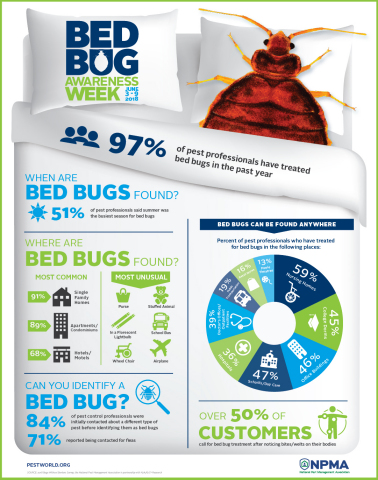Use Your Expertise Of Rodent Nesting Habits To Outsmart These Pest Administration Techniques
Use Your Expertise Of Rodent Nesting Habits To Outsmart These Pest Administration Techniques
Blog Article
Composed By-Cunningham Waugh
When it comes to rodent control, comprehending common rodent habits is essential to efficiently handling invasions. Did you understand that rats have some interesting nesting behaviors that might surprise you? By exploring https://www.worldwildlife.org/stories/a-wildlife-rescue-project-protects-belize-s-threatened-seascapes-and-wildlife-one-manatee-at-a-time , you can gain valuable insights into just how to take on rodent problems in an extra tactical and efficient way. So, let's decipher https://www.businessinsider.com/climate-change-more-bugs-business-for-pest-control-companies-exterminators-2021-7 behind these animals' actions and discover just how to outsmart them in your rodent control initiatives.
Rodent Nesting Behaviors
When observing rats in their natural habitat, you'll observe that they proactively seek out products to create their nests. Rats, such as mice and rats, are resourceful creatures that use a range of things like twigs, leaves, paper, and material to build their homes. They're precise in their nest-building process, frequently lining their nests with softer materials like fur or plumes to create a cozy environment.
Rats like to construct their nests in surprise and secure areas to shield themselves and their young from killers. Typical nesting spots consist of wall surface tooth cavities, attics, cellars, and even within insulation products. By constructing their nests in these secluded locations, rodents can securely increase their spawn far from prospective risks.
It is necessary to comprehend the nesting routines of rodents when executing control steps. By disrupting their nests or getting rid of materials, you can prevent rodents from establishing a visibility in your home or residential or commercial property. Proper cleanliness and sealing entrance points are likewise crucial steps in stopping rodent problems.
Rodent Feeding Patterns
After observing rodents' nesting routines, it ends up being obvious that their feeding patterns play a crucial duty in their daily lives and behaviors. Rodents, consisting of mice and rats, are opportunistic feeders, indicating they'll take in whatever food resource is conveniently offered. They're mostly nocturnal animals, preferring to forage for food during the cover of evening to prevent predators.
Rats have a varied diet plan, ranging from grains, seeds, fruits, and veggies to insects, nuts, and also tiny pets. This adaptability in their food selections permits them to grow in numerous environments, consisting of city locations where human food sources are bountiful.
Their feeding patterns aren't just driven by appetite however also by the need to stock food for times of shortage. This habits is specifically noticeable to prepare for winter season or when nesting. Rats are known to hoard food in their nests or burrows, guaranteeing a constant food supply. Recognizing their feeding patterns is essential in executing reliable rodent control actions to disrupt their food sources and protect against invasions.
Rodent Movement and Travel
Rodents navigate their environments with agility and stealth, using their eager senses to relocate swiftly via their settings. These animals are experienced climbers, able to range walls and vertical surface areas effortlessly. They can also squeeze via remarkably small openings, making it critical to seal off any prospective access factors in your house.
When it comes to traveling, rodents tend to adhere to acquainted courses, creating routes along wall surfaces or skirting the sides of rooms. They're creatures of habit, often staying with these established paths as they forage for food or explore their surroundings.
Rats are recognized for their nighttime practices, so you may hear them hurrying around during the night as they look for food and water. Their activities fast and irregular, allowing them to dart in and out of sight in the blink of an eye.
Recognizing exactly how rodents move and travel can assist you recognize possible invasion areas in your home and take proactive actions to prevent these insects from acquiring a footing.
Conclusion
As you work to manage rodents in your home, keep in mind that understanding their actions is key. By identifying their nesting practices, feeding patterns, and motion, you can effectively avoid invasions.
Coincidentally, by taking positive measures to eliminate food sources and seal off entrance factors, you can interrupt their acquainted paths and compel them to seek new areas, eventually lowering the likelihood of rodent existence in your home.
